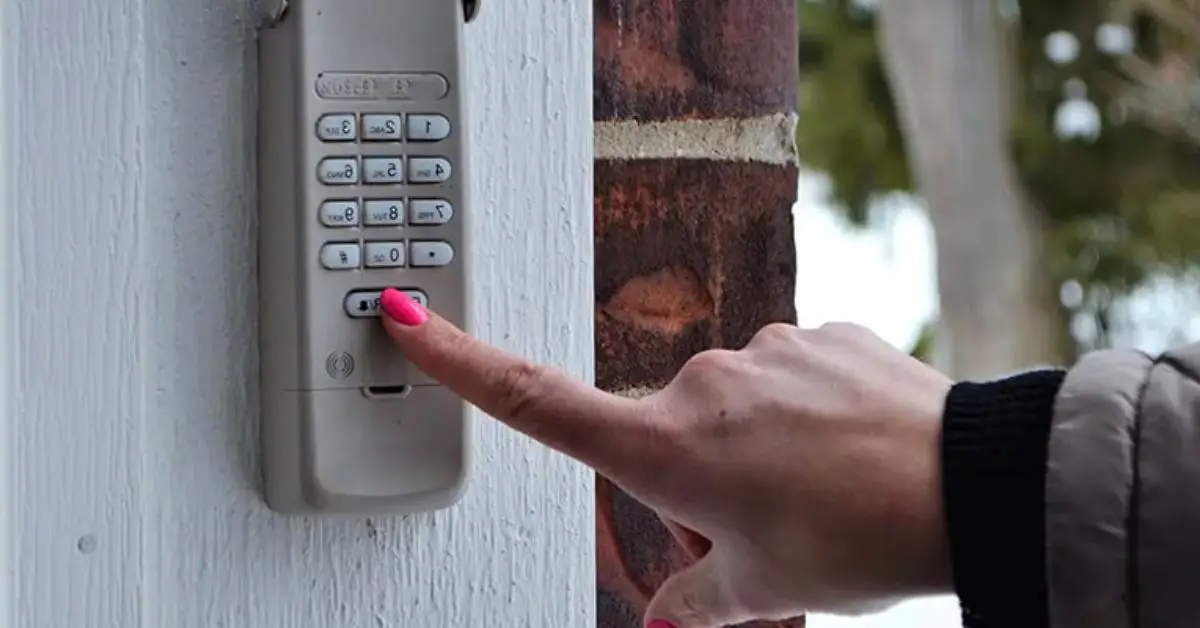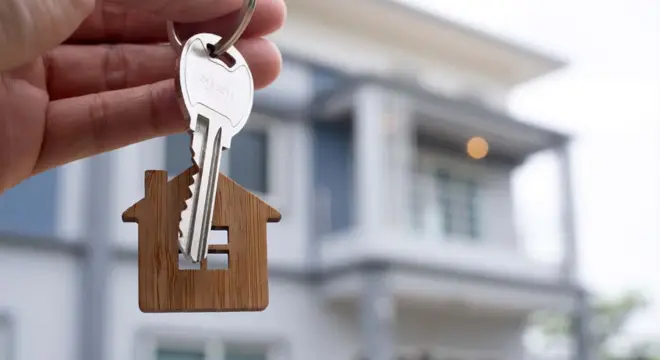10 Must-Do Tasks Right After Buying a House (Before You Unpack)
You’ve just closed on your new home. The keys are in your hand, your name is on the paperwork, and everyone’s telling you, “Welcome home!”
But here’s something most new homeowners don’t hear: Don’t move in just yet.
There’s a small window between closing and settling in that most people rush through. And it’s where some of the biggest regrets start. Maybe it’s a missed repair, a surprise bill, or a safety issue you didn’t think about. That excitement you’re feeling right now? It can make you overlook things that will cost you time, money, or peace of mind down the line.
This list isn’t about decorating tips or what color to paint your kitchen. It’s about the critical things you need to handle immediately—before you move a single box inside. Think of it like setting the foundation beneath the foundation. You only get one shot to do this right.
Let’s start with something almost no one talks about, but every smart homeowner should do on day one.
1. Organize and Secure Your Home Documents
I know it’s tempting to toss your closing folder into a drawer and deal with it later. But that paperwork—the deed, title insurance, mortgage agreement, disclosures, inspection report—it’s not just red tape. It’s your legal and financial safety net.
Here’s what I recommend every new U.S. homeowner do within the first 24 to 48 hours:
- Scan every key document and save them in a clearly labeled folder on Google Drive, Dropbox, or another cloud service.
- Back it up on a USB drive or external hard drive. Don’t rely on just one place.
- Buy a fireproof safe, ideally waterproof too. You can get a solid one for under $70. Store your original documents inside it, along with your passport, Social Security card, and insurance info.
- Start a “Home Binder”—a physical or digital place to keep appliance warranties, repair receipts, contractor contacts, and future maintenance notes. Don’t assume you’ll remember what you spent or who you hired. Track it from day one.
Why this matters: When something breaks, or you need to file a claim, refinance, or prove ownership in a dispute, having everything at your fingertips can save you thousands of dollars and weeks of frustration. And let’s be honest—trying to find your home inspection report a year later when your ceiling starts leaking is not where you want to be.
Also, scan your property survey if you have one. It’ll save you major headaches when you’re adding a fence, redoing your lawn, or dealing with city permits.
Now the question is—have you even opened that closing folder since you left the title office? If not, this is where your first hour as a homeowner should go.
2. Change the Locks, Garage Codes, and Security Access
Most buyers assume they’re the only ones with keys now. But unless you changed the locks the moment you closed, you have no idea who still has access to your home.

Think about it—previous owners may have given keys to babysitters, dog walkers, contractors, ex-partners, even neighbors. And if your home was a rental or flipped property, the list gets longer.
Here’s what you need to do right away:
- Rekey all exterior locks or replace them entirely. Rekeying usually costs less than $100 per lock and ensures old keys won’t work.
- Reset the garage door remote and keypad. Most people don’t even think to do this, but older openers are easy to clone or override.
- Change any smart lock passcodes or wipe them back to factory settings before setting up your own.
- If your home has a security system, schedule a professional reset or install your own system. Don’t rely on whatever was left behind.
This isn’t about paranoia—it’s about control. You’re responsible for who enters that property from now on, and doing this upfront gives you full peace of mind.
Also, don’t wait until “after the move” to do this. Movers, delivery crews, and contractors will be in and out. You want full control before the traffic starts.
Have you changed your locks yet? If not, do it before night falls on your first day in the house.
3. Deep Clean Everything — Before a Single Box Enters
No matter how nice the place looks or how clean it seemed during showings, you need to assume the previous owners didn’t clean for you. Not the way you’d clean for yourself, anyway.
The fridge may still have crumbs in the back. Bathroom grout could be hiding years of buildup. And the carpets? You don’t even want to know what’s deep in there if they’ve never been professionally cleaned.
Before your stuff arrives:
- Hire a professional cleaning crew that specializes in move-in cleans. This usually includes baseboards, cabinets, windowsills, vents, and hard-to-reach places.
- Have the carpets steam cleaned, especially if the previous owners had pets or kids.
- Wipe down light switches, doorknobs, and closet interiors. You’d be shocked how many germs live there.
- If you’re on a tight budget, do it yourself—but do it before furniture blocks your access.
Why this matters: Once your furniture is in, cleaning becomes 10 times harder. And if you move in first and clean later, you’re just working around your own stuff—and breathing in whatever was left behind.
Plus, starting fresh with a deep-cleaned home just feels different. It makes the whole space feel like yours from day one. After cleaning, even small touches — like bringing in a few low-maintenance houseplants — can instantly boost the energy of your kitchen or entryway without adding clutter.
Still wondering whether to hire a cleaner or DIY it? Ask yourself how much energy you’ll realistically have during the move. Sometimes, spending $200–$300 upfront saves you time, stress, and that gross feeling of “we never really cleaned this place right.”
4. Set Up Utilities Before Move-In Day
Nothing kills move-in momentum like flipping a switch and realizing the power’s not on. Or worse — discovering the house doesn’t have heat, water, or Wi-Fi when you’ve got boxes to unpack and a fridge to stock.

It sounds obvious, but a lot of new homeowners assume the utilities will just roll over from the previous owner. They won’t. Most companies need a few days’ notice to transfer or start new service — and some even require deposits or credit checks.
Here’s what to do at least 3–5 days before move-in:
- Transfer or start your electric, gas, and water services. Call each utility company and set the start date for the day of closing (or the day before, if you want to be safe).
- Set up internet, cable, and trash pickup. These can take longer — especially internet. Some areas still have limited provider options.
- Double-check whether your home has a smart meter or needs a physical reading. Some utility companies require someone to come out before activation.
- Ask the seller or agent for a full list of previous providers if you’re unsure where to start.
Bottom line: don’t assume anything’s already “on.” Make the calls, schedule the setups, and confirm everything — before your moving truck pulls up.
5. Check Smoke Detectors, Carbon Monoxide Alarms, and Emergency Shut-Offs
It’s easy to focus on the visible stuff when you first walk through your new house. But the systems that protect your safety? They’re often overlooked — and that can be dangerous.
First, test every smoke detector and carbon monoxide alarm in the house. Replace the batteries, even if they seem fine. And check the manufacturing date printed inside — if it’s more than 10 years old, replace it entirely. A new smoke detector costs less than $30 and could save your life.
Next, locate your main water shut-off valve, gas shut-off, and circuit breaker box. If a pipe bursts or your power surges during a storm, you’ll want to know exactly where to go — not fumble around during an emergency.
Here’s your to-do list:
- Test and replace batteries in all alarms.
- Install new alarms if any are outdated or missing.
- Label your breaker box (most aren’t marked clearly).
- Learn how to shut off the main water valve — and check that it works.
- If your home has gas, learn how to shut that off too.
As highlighted by Redfin, home safety is something too many buyers delay — often until a close call happens.
This isn’t about being paranoid. It’s about being responsible. You just made a major investment. Protect it — and yourself — from day one.
6. Review Your Inspection Report and Prioritize Repairs
Now that you own the place, it’s time to go back to something you probably haven’t looked at since the final walkthrough: your home inspection report.

Most buyers glance at it during negotiations, use it to ask for a few fixes, and then forget about it. Big mistake. That report is basically a roadmap for every potential issue that could cost you money — or hurt your home’s value — if left ignored.
Here’s what you should do:
- Go through the inspection report line by line. Highlight anything marked “Major defect,” “Needs immediate attention,” or “Safety hazard.”
- Prioritize critical systems first — electrical, plumbing, roof, HVAC, foundation.
- Make a repair timeline and budget. Not everything needs to be done now, but the key is knowing what’s coming so you’re not blindsided.
- If you’re unsure about a specific issue, hire a second opinion — even a $150 consultation can save you thousands in surprise repairs.
This isn’t just theory. According to The Times, one couple in the U.K. ended up spending over $2,500 fixing damp and rot issues they ignored from their own survey. And that’s not uncommon.
A missed detail in your report today can turn into a flooded basement or $10,000 roof job next year. Don’t leave it sitting in your email. Treat it like your homeowner’s instruction manual — and act on it while you still have time to plan. And if you’re curious about market trends in your area, this data on the slowest U.S. housing markets can give you helpful context as you plan long-term improvements or resale timing.
7. Set Your New Budget and Build an Emergency Fund
Most first-time buyers budget carefully for the down payment, closing costs, and move-in expenses — but stop budgeting the moment they get the keys. That’s where financial trouble starts.
Owning a home is nothing like renting. Every repair, upgrade, and utility bill is now your responsibility. And the costs add up faster than most people expect.
Here’s what you need to do right away:
- Sit down and create a post-purchase monthly budget that includes utilities, mortgage, insurance, property taxes, internet, trash, and subscriptions.
- Start a dedicated home emergency fund, ideally $2,000–$5,000 minimum. Eventually, aim for 1%–3% of your home’s value saved annually for maintenance and unexpected repairs.
- Track your first 60 days of expenses — moving, cleaning, new locks, tools, furniture — and adjust your estimates. Real costs tend to surprise even careful buyers.
Investopedia strongly recommends building a home repair fund early, especially for properties more than 10 years old. Maintenance is inevitable — the only question is whether you’ll be ready when it hits.
And here’s the truth no one tells you: your emergency fund isn’t for “if” something breaks. It’s for when.
You just signed a mortgage for hundreds of thousands of dollars. Protect that investment by staying liquid and financially ready. It’s not just about the money — it’s about reducing the stress that comes when things go wrong and you’re unprepared.
8. Update Your Home Insurance — And Rethink Life or Disability Coverage
You probably already have a homeowner’s insurance policy. Most lenders require it before you even close. But what you have right now is likely the bare minimum — and that may not be enough to fully protect your new life.

Take 30 minutes to review your policy in detail:
- Does your coverage match your home’s actual rebuild cost — not just its market value?
- Do you have replacement cost or actual cash value for your belongings?
- Does it include things like flood, sewer backup, mold, or personal liability?
- Do you need riders for high-value items like jewelry, electronics, or art?
Now, here’s what almost no one talks about: if you’re the main income earner in your household and you just took on a 15- or 30-year mortgage, it’s time to think beyond property.
Ask yourself: if something happened to me — injury, illness, death — could my partner or family keep this house?
This is why many financial advisors recommend taking out a term life insurance policy that matches your mortgage amount and duration. Same with disability coverage — if you’re out of work for months, you still have bills to pay.
Even a basic term life policy can cost under $30/month and provide hundreds of thousands in coverage. It’s not about fear. It’s about making sure your home stays your family’s — no matter what happens.
9. Create a Home Maintenance Calendar
Owning a home means the maintenance crew is now… you.
There’s no landlord to call when the water heater fails or the AC stops working. And unlike a car, houses don’t come with a warning light when something’s about to break. Preventive maintenance is your best protection, both for safety and long-term value.
Start by setting up a simple calendar — even a Google Sheet will do:
- Every month: Change HVAC filters, check for water leaks under sinks, test smoke detectors.
- Every quarter: Clean gutters, inspect roof and attic, check water softener (if applicable), clean dryer vent.
- Every 6 months: Service HVAC system, flush water heater, test sump pump.
- Every year: Inspect foundation, reseal windows/doors, schedule pest control, clean chimney (if you have a fireplace).
Don’t try to memorize it. Just schedule reminders now and treat them like non-negotiable appointments.
As highlighted in Rocket Mortgage’s homeowner checklist, routine maintenance helps prevent major failures — and often extends the life of your appliances and systems by years.
Neglecting upkeep might not hurt today, but it builds up silently. And suddenly you’re looking at a $6,000 HVAC replacement or a mold problem from a slow leak you never noticed.
A maintenance calendar doesn’t just protect your home — it protects your bank account.
10. Settle Into the Community and Start a New Chapter Right
Most checklists stop at the front door. They tell you how to secure your property, update utilities, even clean behind the fridge. But here’s what they miss: your house isn’t really your home until you connect with the people and place around it.
Once the essentials are handled, make time for this part:
- Introduce yourself to the neighbors — even if it’s just a wave or quick hello. These are the people who’ll keep an eye on your place, lend you a ladder, or help you in an emergency.
- Learn the rhythm of your new neighborhood — parking rules, trash days, local alerts, and where the best coffee or hardware store is.
- If you’re up for it, join the local Facebook group, HOA meeting, or community newsletter. You’ll learn what’s normal — and what’s not — faster than any city website could tell you.
And if you’re into traditions, this might surprise you: in many cultures, people bring bread and salt into a new home before moving anything else. It’s symbolic — bread so you never go hungry, salt so life always has flavor. Small gestures like this might not change the structure of the house, but they do change how it feels to live in it.
The physical move-in is just one part of the transition. This is your chance to set the tone for how you want this next chapter to feel — grounded, connected, and yours. Once you’re settled, these simple “feel at home” tricks can help you create comfort and familiarity faster in your new space.
Before You Unpack: Make This List Your Real First Move
If you’ve read this far, you already know this article isn’t about hype. It’s about protecting what you just worked so hard to buy — not just financially, but mentally and emotionally too.
Moving in is exciting, but it’s also when your responsibilities as a homeowner begin. Doing these 10 things before you unpack helps you take control from the very first step — so nothing slips through the cracks.
To recap, here’s what to handle immediately after buying your home:
- Secure your home documents
- Change locks and codes
- Deep clean the space
- Set up utilities
- Confirm safety systems and shut-offs
- Review your inspection report
- Adjust your budget and build an emergency fund
- Review insurance — and protect your family financially
- Set a maintenance calendar
- Connect with your community
You don’t have to be perfect. You just have to be proactive.
Now you: What’s the one task on this list you haven’t tackled yet? Make that your next move today — and give your new home the start it truly deserves.
Looking for more practical homeownership tips? Visit Build Like New for expert-backed checklists, maintenance guides, and smart homeowner strategies — everything you need to keep your house running like new, from day one.
Disclaimer: This article is for informational purposes only and does not constitute legal, financial, or professional advice. Always consult qualified professionals before making decisions related to your home or finances.


